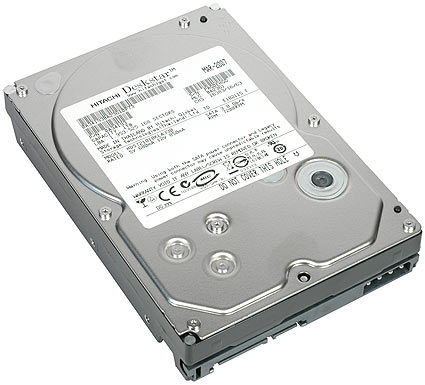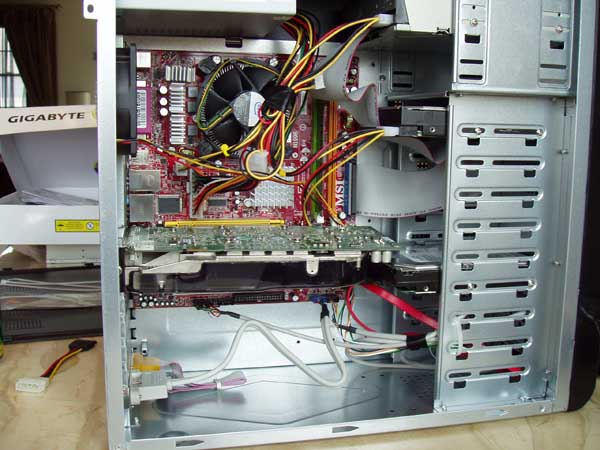Search This Site

Custom Search
|
 |
||
Internal Hard DriveBack Up Hard Drive for Preventative MaintenanceYour internal hard drive is necessary for storing information on your computer system. To effectively operate your system, you need to understand hard disk partition recovery, how to back up hard drive, why you need hard disk utilities, and where to find defrag software. Almost everything you do on your computer starts with information stored on the system drive. When you boot your computer, double click to open Internet Explorer, or another browser, or open a file with Microsoft Word, you are using the drive. All of those actions, and more, start by getting the data they need from the hard disk. External hard drives are becoming more and more popular, and can be used just like an internal drive, but the vast majority of computers store their information on drives. Applications today have expanded beyond computers into video cameras, PDAs, cell phones, and video game consoles. The need for permanent storage on these devices has helped to develop the market for internal drives, which has pushed research in new directions. This research has spilled over into all different types of storage devices. Computer internal hard drives today come in a wide variety of types, speeds, and capacities. When you are looking to purchase a drive for either a new system, or looking to simply upgrade your storage capacity, there are a few things to take into consideration before you make the purchase.
InterfaceThe first thing you will need to figure out is if you need an IDE or SATA hard drive. This is going to be determined by your motherboard. Depending on the age of your computer, you may or may not have the hookups needed for a SATA drive. The SATA interface is preferred for its speed, but if you do not have a SATA connection, then it’s not something to get worried about, IDE will still perform well. First thing to do is to look at your motherboard. Turn your computer off and remove the side panel. You will be looking at something similar to this…
Look for your existing hard drives. First we want to look at the type of cable that is connected to your drive. If it is a wide flat cable or a round one about as thick as your finger, then we are looking at IDE. If it is flat, but only about half an inch wide, then we are looking at SATA. Next, you’ll need to look at the motherboard to determine if you have room for another hard drive. If you follow the existing cable from your hard drive to the motherboard, you will see where it connects. There are a few possibilities here.
If you have SATA:SATA connections are usually found in banks of 2, 4, or 6. If you only have a single drive, and it is SATA, chances are you should have at least 2 more open connections. Your DVD player / burner may be occupying one of the slots as well. If you have an open slot or 2, then you are good to go for installing another.
If you have IDE:IDE connections are found in either a bank of 2 or a single connection. If you have a single internal drive and a DVD/CD player, you may see a single cable connecting the two of them and then into the motherboard. If this is the case, look for a second IDE connection directly below or above the one that is being used. Don’t get this mixed up with the floppy drive connection, that one is a bit wider than the IDE connections. If you have an open connection on the motherboard, then you are good to go for installing another. If not, continue on… If you do not have an open IDE connection on your motherboard, do you have two of them that are both being used? If you do, but only have one internal hard drive and one DVD/CD player, then you are still ok to install another drive. When you do the install, you will just need to set a jumper to designate which drive is the master drive. If you have all connections filled then determine the following… If you have 2 connections on the motherboard that are both used, then you need to count drives. Count all hard drives, DVD drives, and CD drives. If you hit four, then you will not be able to install another hard drive. However, do not despair – you should still be able to install an external hard drive. If you only hit 3, then you are ok and can still install another drive. There is a third interface that you may rarely have, SCSI (Small Computer System Interface - pronounced "scuzzy"). Most home computers do not have SCSI interfaces as the drives are much more expensive. SCSI is usually used in servers, but depending on your motherboard, you may have SCSI connections. Since it is so rare in home computers, I am not going to go into any detail here, but if you are interested, you can read more here. More information on installing a hard drive.
Storage CapacityHard drives come in many sizes these days. Anywhere from 8GB all the way up to 1TB (1 Terabyte = 1000 Gigabytes). Deciding on what you are going to use the drive for will help decide how big of a drive you need. Keep in mind also that the more storage space on the drive, the more expensive it will be. Things you may be using the drive for…
There are certainly more reasons for increasing your storage capacity on your computer, but those are some of the more common ones. The key is to plan ahead and figure out before hand how much space you think you’ll need. There have been a few times when I did not plan things out correctly and ended up filling my new drive pretty quickly.
SpeedThe final consideration is the speed of the internal hard drive. Speeds these days range from 7,200 to 15,000 RPM’s. Like with capacity, the higher the speed, the more it is going to cost you. By far the most common is 7,200 rpm, and that is what most computers have installed. Reasons why you might want a faster one include…
Currently, the higher speed drives are restrictive because of price. As an example, a 500GB 7,200 RPM drive will cost you about the same as a 150GB 10,000 RPM drive. And if you go higher than that, expect to pay about the same for a 36GB at 15,000 RPM. For most applications, 7,200 will be just fine and will be able to keep up with your system without slowing it down.
Maintenance and Set UpBecause of the importance of the internal drive to your system, you need to ensure that you are practicing preventative hard disk or drive maintenance. Set up regular back up hard drive procedures. Use hard drive utilities, hard disk partition recovery practices (if you have partitioned your drive), and maintenance and defrag software. All are tools and practices to use to ensure that you don't lose or corrupt the information on your hard drive.
ManufacturersThere are 4 main manufacturers of internal hard drives that I usually look at when purchasing a drive. I have used all of them except for Fujitsu, so cannot speak to the quality of their drives, but they are a major manufacturer. They are…
My personal favorite is Seagate. But keep an eye on the others and compare prices and warranties when shopping. A good hard drive will come with at least a 3 year warranty, although I have never had to actually use one. Additional Reading:Return to Build Your Own Computer Home Page |
What's NewHere's What Visitors Have to SayAwesome site and very useful information that is to the point... Thank you for the hard work that you put into this site. This site is the best site on the net far as I am concerned and I will be refering this site on to my students. Once again, great site!!! Kristian, IT instructor from the U.K. Thank you for helping me to fix my pc motherboard led indicator. Dietram, Tanzania Hi, I found your site and all the wonderful tutorials. This is just the thing I'm looking for. Davey, Canada The hardest part of the build, I thought, was the wiring. And here your guide really shines. Most of the other computer build guides ignore it, or just say 'connect all the wires properly'. So thanks for the details! Donald, Netherlands |
||
|
|
|||
|
| Home Page | Motherboards | CPU | Memory | Computer Drives | Graphics | Power Supply
| Input Devices |
| Output Devices | Cooling | Cases | Modems | Troubleshooting | Computer Guides | Buying Guide | | Free Games | Computer Software | Green Computers | Ultra Mobile PC | Glossary | Builder's Corner | | Site Index | Contact Us | Advertising | Return to top
Copyright© 2008-2014. Voice Marketing Inc. All Rights Reserved. Read our Privacy Policy. |
|||




